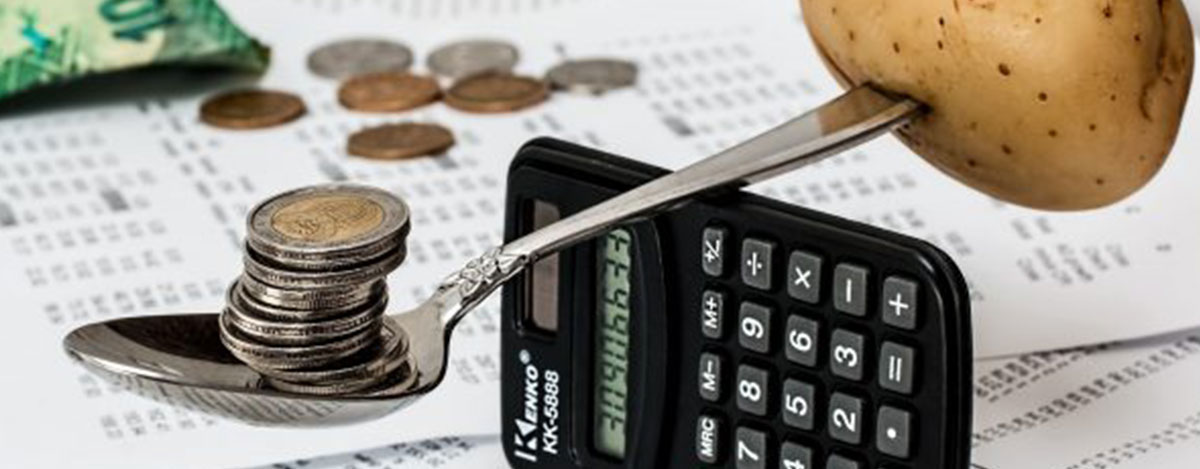
You don’t have to be overwhelmed about budgeting anymore! Create a budget that works for you with our five-step guide. By following these easy steps to create your budget, you’ll develop more ways to save and invest in your future, and you’ll gain control of your finances like never before.
#1: What’s Your Take-Home
Net income is the amount of “cash” you walk away with on payday, aka your “take-home” income. In order to create a budget, you’ll need to start here. The number you’ll want for your budget is a month’s worth of net income. So, if you get paid twice a month, it’ll be your take-home for both paychecks. Once a month = one paycheck.
#2: What Has To Come Out
Write down the fixed expenses like your house or rent payment, a car loan, utility bills, internet service, etc. These are bills that are required to pay every month. For those bills that fluctuate such as your electric or water bill, round them up. If you typically pay around $87/month for your electric bill, round it up to $90. Remember: It’s always better to overestimate than under prepare.
CFSC bill payments offer the ability to make sure your bills are paid on time, every time so you don’t have to worry.
Pro Tip: Many utility companies offer average-pay plans. Average pay plans allow your yearly bill to be averaged so that you pay the same amount each month rather than different amounts during different seasons. This especially helps when trying to create a budget that works. Call your local utility company to see if this is available in your area.
#3: Count Your Variables
Variable expenses like gas, groceries, and entertainment can drastically affect how things work when you create a budget. If they aren’t accounted for, your budget simply won’t work.
When you’re writing these down, it’s best to estimate as closely as you can. Give yourself years of budgeting success by getting in the habit of setting strict limits for your variable expenses. For example, take a close look at how much money goes to groceries each month, and set yourself a strict limit. Allow a specific amount for your gas each month (factor in how much you’ll need to get to and from work each week, and then add in an extra tank or so each month for buffer). Whatever you do, set your limits and stick to them.
Using a prepaid debit card from CFSC Community Financial Service Center can also help you easily manage your funds without adding unbearable interest rates and debt that you acquire with credit cards.
#4: See What’s Left
It’s time to do the math! Subtract your outgoing from your incoming. How much do you have left over? If you have a negative number or not much left at the end of the month, there’s still work to be done. Examine your variable expenses again and see what you can cut. How much money do you spend eating out? Save by cooking at home instead. Call your cable tv provider and see what they can do to lower your bill. How about renting movies and staying in rather than going to the movies for date night? Take out what you’d like to have, and focus on what you need to have.
#5: Create Your Budget
The hard part’s out of the way! It’s time to develop a plan. Put half of what you have leftover at the end of the month into savings, no matter the amount. Every little bit helps, and in order to save, you have to start somewhere. $25 a month in savings equals $300 at the end of the year.
Now, take the other half and find your loan with the highest interest rate (excluding your mortgage – save that for your very last loan pay off). Put that other half on top of your regular monthly loan payment so you can start chipping away at it. Sooner or later, that loan will be paid off, and you’ll have that much more extra income each month.
Don’t Forget to Check Back In
With changes in life comes changes in your finances, and thus, you’ll want to check back in on the budget you’ve created. If you get a raise, automatically add half of it to your monthly savings to keep building that account. The other half can be used to pay off more debt or add to your variable expenses allotment.
When it comes to making the most of your tax return each year, your nearest check cashing place at CFSC offers tax direct deposit for your convenience. CFSC tax direct deposit allows you to get your tax return EARLY and put your money towards what counts. Make your tax return truly count this year by putting half into savings and half towards one of your lines of debt or building your emergency fund. You can also cash your tax refund check or unload your debit card for CASH right away at CFSC. No waiting for checks to clear or limits on unloading your card.
In 2018, make it a great financial year! Follow some or all of these steps and practices, and find yourself a little more financially secure. For more financial services or information, stop by your local CFSC.